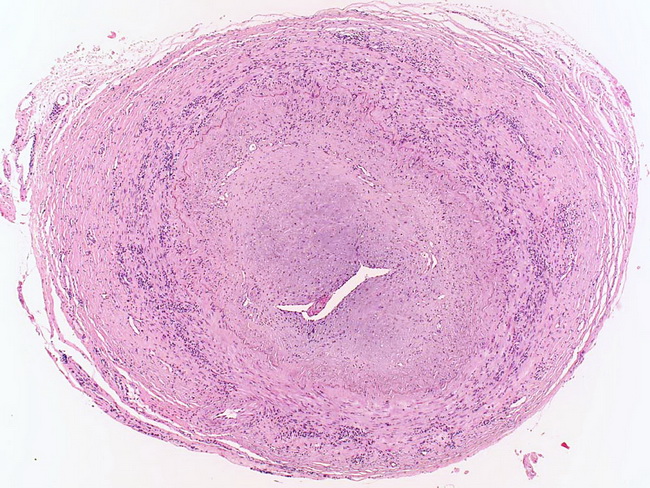Giant Cell Arteritis : Clinical Features


Comments:
Clinical Features of Giant Cell Arteritis (GCA): According to 2012 Revised International Chapel Hill Consensus Conference nomenclature, the patients must be >50 years of age. Most patients are in their 70s or 80s. Women and people of Norther European descent are more commonly affected. Majority of the cases are subclinical. In symptomatic patients, the typical presentation is headache, fever and localized scalp tenderness in the distribution of the temporal artery. Involvement of extracranial carotid artery branches can cause jaw claudication (pain with chewing), facial pain, and even blindness. Cerebral artery involvement can lead to transient ischemic attacks or stroke. Patients with subclavian artery involvement can develop upper extremity claudication and asymmetric blood pressure. About 30-50% of patients develop polymyalgia rheumatica characterized by musculoskeletal pain in shoulder and pelvic girdles. Erythrocyte sedimentation rate and C-reactive protein are elevated. When ascending aorta is involved, the destruction of tunica media can lead to aneurysm formation, aortic root dilatation, aortic valvular insufficiency, and aortic dissection. Other rare complications include ischemic necrosis of the scalp and tongue secondary to medium-sized vessel involvement. About the image: Temporal artery involved by giant cell arteritis. There is transmural inflammation, disruption of internal elastic lamina and considerable intimal hyperplasia causing near-total occlusion of the lumen. Image copyright: pathorama.ch



